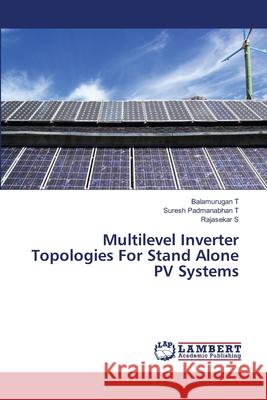Multilevel Inverter Topologies For Stand Alone PV Systems » książka
Multilevel Inverter Topologies For Stand Alone PV Systems
ISBN-13: 9783659336287 / Angielski / Miękka / 2013 / 60 str.
Multilevel inverters are mainly used in high power applications, where they have been proved to be reliable and robust. They also operate at low frequency with the reasonable high efficiency. Presently, the multilevel inverters are widely used in the renewable energy systems as it is proved to be reliable, efficient and robustness even for small power systems. In this work, few multilevel topologies have been analyzed for application feasibility to implement it in the battery inverters. It is observed that the multiple-winding transformer based multilevel topology contributes the best solution to the current demand of reliable and efficient inverters. The adopted topology is based on a line-frequency transformer with several isolated outputs that are combined through static power switches in order to produce a multilevel voltage waveform. This topology is suitable to implement high-resolution multilevel inverters and also it is capable to operate with bi-directional power flow.
Multilevel inverters are mainly used in high power applications, where they have been proved to be reliable and robust. They also operate at low frequency with the reasonable high efficiency. Presently, the multilevel inverters are widely used in the renewable energy systems as it is proved to be reliable, efficient and robustness even for small power systems. In this work, few multilevel topologies have been analyzed for application feasibility to implement it in the battery inverters. It is observed that the multiple-winding transformer based multilevel topology contributes the best solution to the current demand of reliable and efficient inverters. The adopted topology is based on a line-frequency transformer with several isolated outputs that are combined through static power switches in order to produce a multilevel voltage waveform. This topology is suitable to implement high-resolution multilevel inverters and also it is capable to operate with bi-directional power flow.











